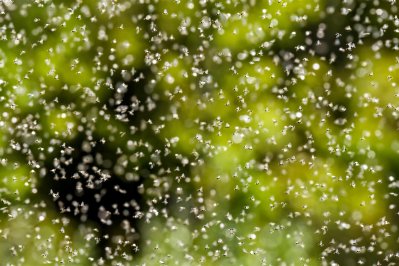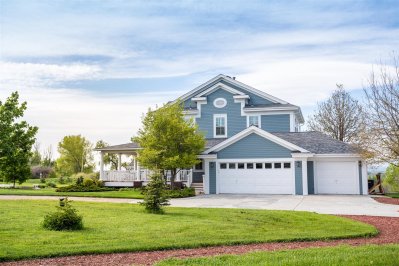The Top Twenty Cities With the Worst Termite Infestation Problems

With unseasonable colder temperatures across most of the continental United States this winter, we are anticipating a rather active springtime swarming season for subterranean termites. During warmer winters, termite colony activity does not slow down as it does in colder winters, requiring termite control services. As a result, there are typically fewer swarms come spring.
During colder winters, while subterranean termite colonies do not cease functioning, it does result in a larger swarm which typically lasts longer. As temperatures start to warm back up, there will be more termites ready to mate. These termites will leave their colonies and look for mates to create new colonies.
Termite swarms are a sign that your home or business could have a serious termite infestation. Even if you have not noticed any termite damages to your property, when you see swarming termites it lets you know colonies are nearby. So, it is not a matter of if your property will become infested, but when it will become infested—that is, if it has not already.
In addition, subterranean termites favor the warm, damp, and moist environments, like those found in California, Florida, and Texas, although different termite species can survive and have been found in all states, except Alaska. No matter where you live, you need to be aware of the potential of termites on your property.
To see how much you should be concerned, let us take a look at the top twenty cities across the nation with the highest reported termite incidents. These are based on the number of termite extermination and service calls received by termite exterminator service companies in these areas using data collected from 2016.

For 2016, residents and business owners in Mobile, AL topped the list with the most termite problems and infestations. Alabama is another state where the conditions are preferred by subterranean termites. Other cities where termites can be a real problem for homeowners and businesses include:
Los Angeles, CA
San Antonio, TX
San Jose, CA
San Bernardino, CA
Dallas-Fort Worth, TX
Houston, TX
Riverside, CA
Sacramento, CA
San Diego, CA
Tampa, FL
Miami, FL
Orlando, FL
New York, NY
Memphis, TN
Boston, MA
Baton Rouge, LA
Oklahoma City, OK
Little Rock, AR
Philadelphia, PA
As you can see, cities in California, Texas, and Florida were all top locations where termites were a major problem in 2016. You can expect, with the warmer temperatures of spring starting in some of these states, the swarming season for termites will start to begin soon and can continue through late April and into May.
How Far Can Subterranean Termites Spread?
Termites are not great at flying, so they rely upon the wind to fly around. If it is windy during a heavy swarming day, they could easily be blown several hundreds of feet away from their original colonies. Just because you don’t see swarms on your property, if a neighbor across the street or down the road has termites, the swarm could easily reach your property.

How Long Does a New Subterranean Colony Take to Develop?
Initially, a new colony will start off with the new queen and king and slowly develop from there. However, it is not uncommon for established colonies to help support newly formed ones. Some of the workers will assist with the day-to-day tasks until the new queen can start laying eggs and create her own offspring. Typically, since termites never sleep, it only takes about a year or so before the colony is fully established.
How Many Termites Are in an Established Subterranean Colony?
There can be millions of termites in a single colony in a relatively small area. It is not uncommon to find ten, twenty, or even more colonies all within a single acre of property. This can easily push the combined number of termites between all colonies into the billions.
What Should I Do if I See Flying Termites or Find Discarded Wings?
If you notice termites flying around your home or business or discover multiple pairs of discarded wings, you will want to call and arrange a termite inspection. Swarming termites indicate the presence of existing colonies near or on your property. Discarded wings mean the swarming termites have found mates and are in process of establishing a new colony.

What About Drywood Termites?
Drywood termites are just as much a concern for homeowners and businesses throughout most of the United States. California is also prone to this species. Unlike their cousins, who swarm in the springtime, drywood termites tend to swarm in the late summer and early fall. They can also continue to swarm into the winter months during milder winters.
Unlike subterranean termites that must maintain a colony in the ground, drywood termites just need access to exposed wood to create a new colony. The number of termites in established colonies is also fewer. However, this species of termites can be more destructive since their colonies are also inside the wood they are destroying.
Do I Need to Worry About Termites if My Home Is Not Made of Wood?
Some newer homes use steel, concrete, brick, vinyl, PVC, and other materials not made from wood. While the exterior of your home may appear as though it is not made of wood, in all likelihood, there are still wood materials used in its construction.
For instance, the support framing for interior walls is normally wood. The underlayment between the attic and roof is typically wood. You can also have wood used for subflooring over the steel supports.
Just because you cannot see the wood, it does not mean it is not there, much like termite infestations. Furthermore, termites will eat any type of wood-based materials. They will eat hardwood flooring, wooden cabinets and countertops, books, bookshelves, furniture, baseboards, and so on.

How Do I Protect My Home or Business Against Termite Infestations?
The smartest way to ensure your home or business does not become infested with termites is with regular termite inspections, combined with the appropriate preventive treatment services. The types of treatments your home or business requires depend on a variety of factors.
If you have termite colonies in your yard, but not currently in the home, then you want to create a barrier around the exterior of the home to stop termites from gaining access. For instance, your termite treatment might consist of using yard baits directly over the colony locations. As the termites eat the bait, they carry it back to the queen and, eventually, the colony will die.

There are also other products you can use that will directly kill termites on contact—like orange oil. This form of treatment can be necessary when you need to get a major infestation outside or inside the home under control quickly. It can also be supplemented with other direct kill methods to fully eradicate the colonies.
It is important to keep in mind that treatment products are only effective for a set period of time. They do need to be reapplied periodically in order to kill and repel termites. Combined with regular inspections, you can help protect your home or business and not let it become part of the billions of dollars in annual termite damages statistics.
Contact MightyMite Termite Services at 408-377-3761 to schedule a FREE termite inspection of your home or business in the San Jose Area, from Contra Costa to Monterey and San Benito.
